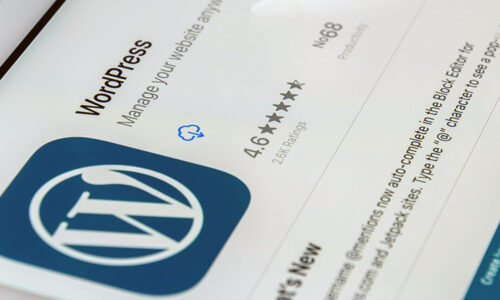- admin
- 0 Comments
- 432 Views
Worried that hackers are trying to access your WordPress website? You have the right to be.
Hackers use error metaphors and techniques to guess signed and corrupted data on WordPress sites. The most attacked page is the login page.
Once a hacker comes into your control panel, they can take complete control of your website. They will install malware, backdoor, damage your website, advertise and sell illegal products, steal your personal information, distract your visitors to the site, and engage in other malicious activities.
Fortunately, you can protect your signature page by limiting the number of times a user tries to enter the correct information.
Why should you limit login attempts?
While WordPress is a stable solution, it does not protect your website from hacks. A powerful hacker is a method that uses examples and errors to crash your WordPress website.
The most common type of solid attack is to guess a password. Hackers use software to control your information so that they can access your site.
By default, WordPress allows users to enter passwords as many times as possible. Hackers can take advantage of this by using scripts that enter different combinations until they guess the correct login.
You can prevent cruel attacks by limiting the number of failed login attempts per user. In WooCommerce, you may integrate Role-Based Prices for WooCommerce, but still, you should restrict their login attempts. For example, you can temporarily block a user after 5 consecutive failed login attempts.
What are WordPress Limit Login Attempts?
By default, WordPress allows an unlimited number of login attempts to your site. You can try as many username and password combinations as you like.
Hackers are aware of this and take advantage of this device. First, they compile a database of frequently used usernames and passwords, along with stolen or purchased data. They then program robots to visit WordPress sites and test thousands of username and password combinations in less than a few minutes.
By doing this, hackers can enter many WordPress sites. This is called a brute force attack because they crawl your area with thousands of login requests in minutes.
Using this hacking method, hackers have a reasonable success rate (around 10%) because WordPress users typically assign weak login credentials. Although 10% seems small, they can quickly hack into thousands of websites with millions of sites in WordPress. By limiting the number of login attempts, you can stop pirates and their robots.
The user will receive a limited number of times to enter the correct login credentials. For example, you can give three tests. If a user fails to enter the right credentials every three times, they will be locked out of their account. They are presented with options for restoring login credentials, such as:
- Contact your administrator.
- Use the “forgot password” option to reset your password by answering questions.
- Verify your identity with OTP verification or email verification.
- Solve the hood to prove that they are humans, not robots.
After the robot tries to log in three times, they face these obstacles, and they cannot continue and move on to the next goal. Therefore, this security measure can protect your site from hackers and prevent problems in the world.
Benefits and Drawbacks of Limiting Login Attempts
There are good sides to limiting login attempts in WordPress, but there are also some downsides.
Benefits
The main benefit of restricting sign-in attempts is that it prevents robots and humans from accessing your WordPress blog or website (we’ve already said that). This is useful even if you have a password that is difficult to guess.
It also prevents excessive pressure on your server. If a hacker enters too many passwords into your site in a short time, the strain on your server will increase. Therefore, speed and performance suffer. You don’t want that.
It is usually sufficient to lock the hacker to prevent further login attempts temporarily.
Drawbacks
Genuine users may also be disabled if they have multiple failed login attempts, and it’s pretty awkward. However, you can fix this problem with an allowlist of all known WordPress users so that they never have access.
Second, the easiest way to limit sign-in restrictions is to use a plug-in. Although the plug-in itself is easy, many WordPress users are exhausted by using it.
You can use an alternative method by modifying your theme in the function.php file to resolve this.
More Security Tips
Restricting sign-in attempts is just one part of WordPress’s security. There are other security tips to keep hackers away. Here is some more information.
Use Strong Passwords
Your password is the gateway to your website. If it is weak, anyone (desired and unwanted) can enter without resistance. If this is strong, only legitimate users will be able to access it. So use a strong password as much as possible.
2-factor authentication
This is a security process in which a WordPress user accesses the website only after two authentication factors have been provided. This is another way to prevent brute force attacks.
Once you’ve set it up, you’ll receive your phone code every time you log in. This authentication method works well, especially if connected to a strong password.
WordPress Updates
The most significant cause of WordPress security breaches is a vulnerability in plug-ins. Keeping the WP kernel, plug-ins, and themes up-to-date is critical. Uninstall plug-ins and themes that you don’t need.
Use Only a Recommended WordPress Host
WordPress has not left us unconscious. WordPress hosting requirements are clearly stated, and using an unauthorized host could compromise your site from attacks.
Not using SSL certificate
Data sent over the web without SSL will be made public. This means that data can be stolen and used for illegal purposes. An SSL certificate encrypts your data and prevents hackers from accessing your data.
Concluding Remarks
Brute force attacks are a common vector of hacker attacks, and WordPress sites are often the preferred target. Hackers constantly target WordPress sites. So it is even more vital that you put appropriate security measures on your site. The WordPress login page is the most attacked, so restricting login attempts is a good place to start. All you have to do is prevent hackers and robots from performing many consecutive login attempts.





